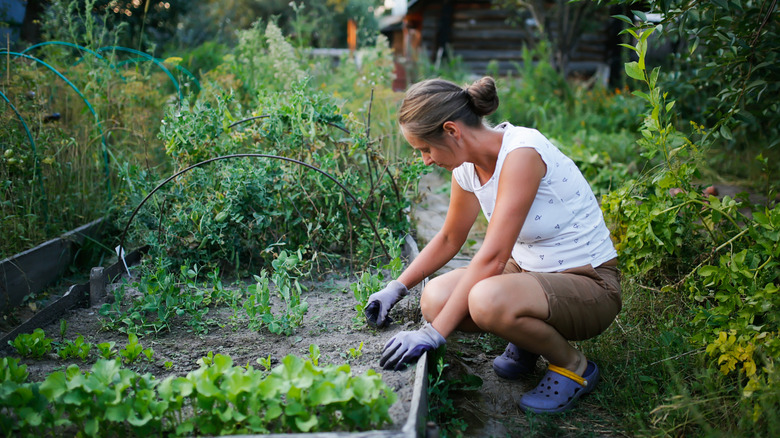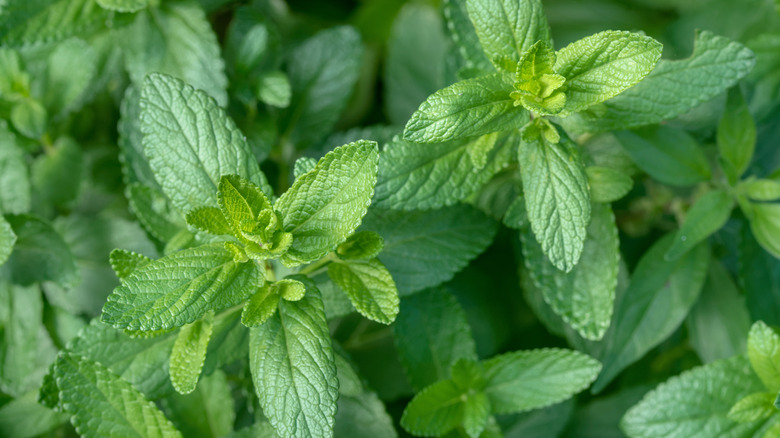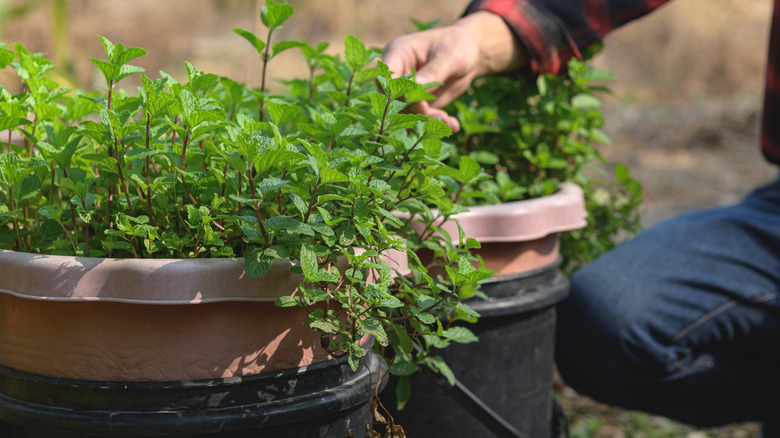Fast-Spreading Invasive Herbs That Can Take Over Your Garden If You're Not Careful
Left unchecked, invasive herbs compete with native species, upset local ecosystems, and damage habitats. They are, by definition, plants growing outside their natural range that threaten local biodiversity. We generally think of invasive plants as those growing out of control and stealing resources from other plants until they're the only plant left in the garden. Mints (Mentha spp.) are notorious for invading yards. They spread so rapidly that horticulturists recommend only growing them in containers or creating barriers between the mint and the rest of the garden. Other fast-spreading herbs you might want to avoid planting are fennel and horseradish.
Invasive herbs spread rapidly either by seed or through their root structure. Keeping them under control requires human intervention unless you grow them exclusively indoors or in a well-designed container garden. Even then, there's a chance that a seed will escape or a runner will take root, but you don't need to abandon the idea of harvesting your own herbs.
Avoid these invasive herbs
Peppermint (Mentha x piperita) and spearmint (Mentha spicata), the most common mint varieties, grow up to 3 feet tall and produce small purple flowers. Peppermint is hardy in zones 5 through 9, while spearmint grows in zones 4 through 11. Mints spread by underground rhizomes, root-like structures that send up shoots. Catnip (Nepeta cataria), hardy in zones 3 through 9, is a member of the mint family that repels aphids from the garden. However, it is typically not invasive.
When grown in warm climates, fennel (Foeniculum vulgare), hardy in USDA zones 4 through 9, can become invasive due to the ease with which it self-seeds. Yellowish leaves that smell like anise and tiny yellow flowers grow on stalks that reach roughly 4 feet tall. The good news about fennel, aside from its use in cooking, is that the flowers attract butterflies.
While the leaves are edible, it's the root of horseradish (Armoracia rusticana) – not to be confused with Japanese horseradish, aka wasabi (Wasabi japonica), a different aquatic plant – that's prized for its use as a pungent condiment. The textured green leaves grow in a 2-foot-tall rosette that produces small, white flowers hardy in zones 2 through 9. The plant spreads shoots through the ground that rob other plants of space and nutrients, and regrows if any piece of root is left in the soil.
Taming invasive herbs
The best way to avoid having to control invasive herbs is to not introduce them to your garden in the first place. If you must have them, or if you find an unexpected arrival growing in an unwelcome spot, a handful of tips and tricks can help control them. Flowering herbs like fennel will spread by seed, if you don't deadhead them. Deadheading simply means nipping the flowers off the plant after they die. This encourages growth for many herbs, improves the flavor, and keeps them from spreading, but it also removes a food source for pollinators.
If you want potentially invasive herbs to share the garden, create a barrier between them and your flowers and vegetables. Surround the plot where the herb will be planted with a 12-inch strip of metal or plastic edging buried in the soil, leaving about an inch aboveground. You can also bury large containers upright in the garden, leaving the top inch or two exposed aboveground.
However, the simplest way to keep a prolific plant, like mint or horseradish, from taking over the garden is to grow it in a pot and to set that pot in a place where the roots can't escape from the drainage holes and start new plants. Don't let the herb grow over the edge of the pot and trail on the ground, either. Use a good potting mix or potting soil, water the herb regularly, and give it plenty of sun.


